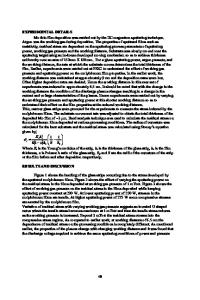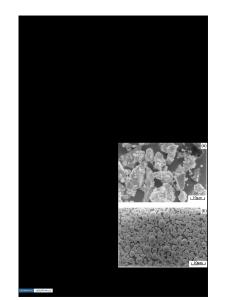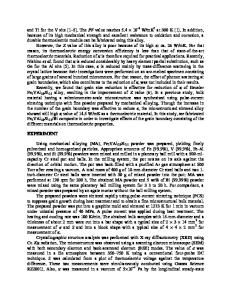The effect of molybdenum addition on properties of iron aluminides
- PDF / 1,947,008 Bytes
- 7 Pages / 590.28 x 785 pts Page_size
- 40 Downloads / 335 Views
I. I N T R O D U C T I O N
THE unique
electrical, magnetic, and corrosion resistant properties of iron-aluminides with compositions near that of Fe3A1 have long stimulated the interest of material scientists. However, lack of ductility at ambient temperatures and a decrease in strength above 600 ~ have been major obstacles to their development as structural materials. Although iron-aluminum alloys have been studied since the early 1900's, relatively little information about the effect of ternary additions on the mechanical and physical properties of Fe3A1 is available. Because of the brittleness of alloys with higher aluminum levels, ]1,21early studies concentrated on alloys with less than 20 pet A1 (all compositions are reported in atomic percent). Recently, more interest has centered on the Fe3A1- and FeAl-based ternary alloys due to the improved corrosion resistance at high temperatures that these higher aluminum levels provide. The purpose of this paper is to describe the effects of the addition of various amounts of molybdenum on the microstructure and metallurgical properties of Fe3A1 with a composition of Fe-28A1. This alloy has an ordered DO3 structure below and ordered B2 structure above approximately 550 ~ t3~ The solubility limit of molybdenum in the base alloy will be discussed also. The earliest reports on the alloying effects of molybdenum in Fe3A1 were written in the 1950's and 1960's, describing the properties of an alloy called Thermenol developed by the Naval Ordnance Laboratory. I4-71 This alloy contained 28 pet A1 and approximately 2 pct Mo, plus small amounts ( < 1 pet) of zirconium and carbon. It was reported to have excellent oxidation and corrosion resistance, good stress-rupture and tensile strength at elevated temperatures, soft magnetic characteristics similar to some nickel-based alloys, and high electrical resistivity. However, no significant commercialization occurred because of poor room temperature ductility and difficulties with processing and control of microstructure. More recently, Culbertson and Kortovich [8~ reported C.G. M c K A M E Y is a Development Associate, and J.A. H O R T O N is a Research Staff Member, Metals and Ceramics Division, Oak Ridge National Laboratory, Oak Ridge, T N 37831. Manuscript submitted December 7, 1987. METALLURGICAL TRANSACTIONS A
results of their alloy development program involving the ternary additions of several elements, including molybdenum, on mechanical properties, workability, and oxidation resistance of Fe3A1. Their alloys were prepared using powder metallurgy processing procedures, as well as isothermal forging. No adverse effects on oxidation resistance or workability were noted for the ternary alloys made with molybdenum. At 600 ~ significant increases in yield strength were seen in several ternary alloys, including one with 2.3 pct Mo. However, that alloy exhibited a significant drop in room temperature ductility compared to the 5 pct ductility of Fe3A1. Mendiratta and Lipsitt investigated the effect of ternary additions, including 3
Data Loading...











